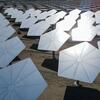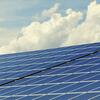Fan Wang, YangYang Xu, Piyushkumar N Patel, Ritesh Gautam, Meng Gao, Cheng Liu, Yihui Ding, Haishan Chen, Yuanjian Yang, Yuyu Zhou, Gregory R. Carmichael, and Michael B McElroy. 2024. “Arctic amplification–induced decline in West and South Asia dust warrants stronger antidesertification toward carbon neutrality.” Proceedings of the National Academy of Sciences, March 2024, 121. Publisher's VersionAbstract
Dust loading in West and South Asia has been a major environmental issue due to its negative effects on air quality, food security, energy supply and public health, as well as on regional and global weather and climate. Yet a robust understanding of its recent changes and future projection remains unclear. On the basis of several high-quality remote sensing products, we detect a consistently decreasing trend of dust loading in West and South Asia over the last two decades. In contrast to previous studies emphasizing the role of local land use changes, here, we attribute the regional dust decline to the continuous intensification of Arctic amplification driven by anthropogenic global warming. Arctic amplification results in anomalous mid-latitude atmospheric circulation, particularly a deepened trough stretching from West Siberia to Northeast India, which inhibits both dust emissions and their downstream transports. Large ensemble climate model simulations further support the dominant role of greenhouse gases induced Arctic amplification in modulating dust loading over West and South Asia. Future projections under different emission scenarios imply potential adverse effects of carbon neutrality in leading to higher regional dust loading and thus highlight the importance of stronger anti-desertification counter-actions such as reforestation and irrigation management.





